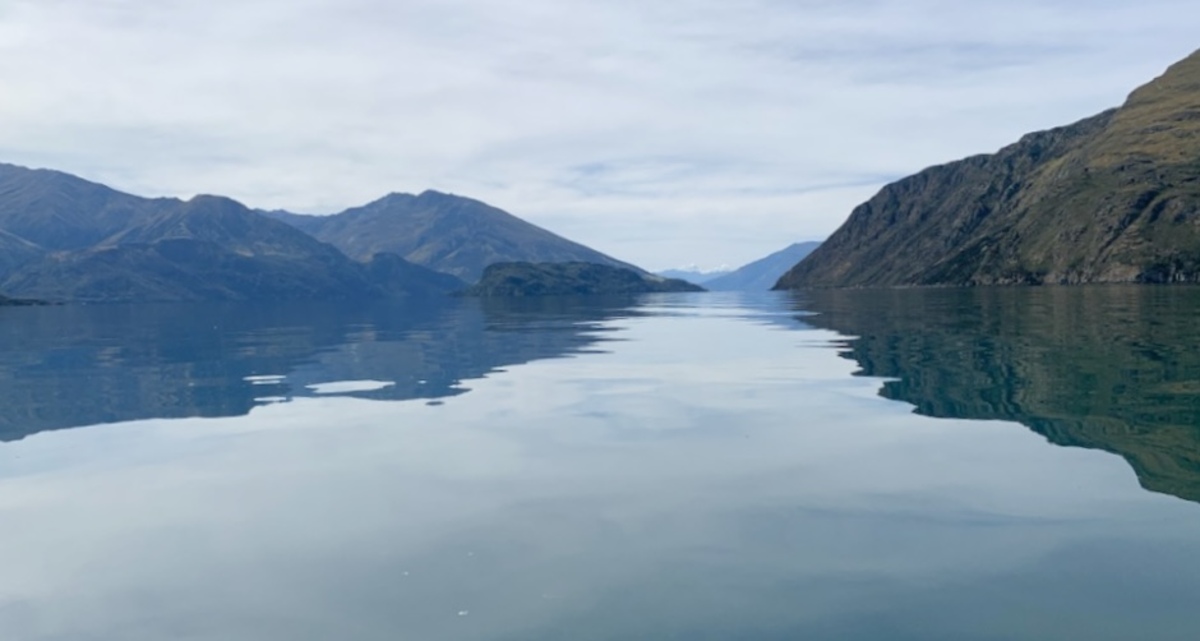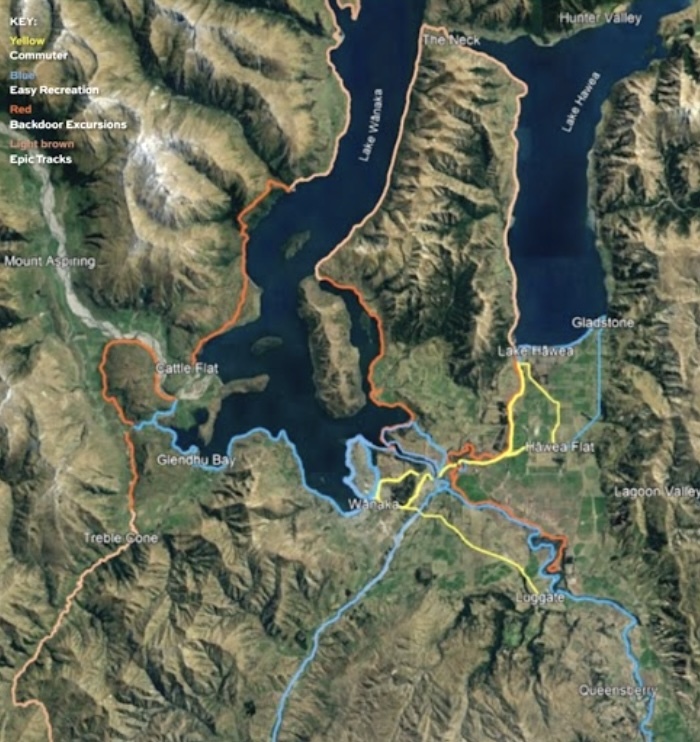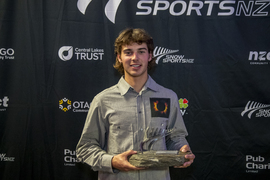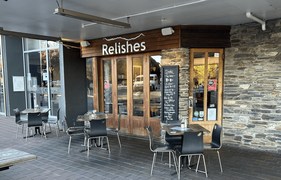Proposed Wānaka loop - NZ’s next ‘iconic track’?

13 October 2024, 4:00 PM
 Looking north from Mou Waho towards the shores of Lake Wānaka where new tracks are envisaged. PHOTO: David Howard
Looking north from Mou Waho towards the shores of Lake Wānaka where new tracks are envisaged. PHOTO: David HowardA proposed 80km walking and cycling loop-track along the shorelines of Lakes Wānaka and Hāwea has the potential to become an iconic New Zealand track, believes the Upper Clutha Tracks Trust (UCTT).
The track - a feature of the UCTT’s strategic plan - would traverse the precipitous East Wānaka faces between Wānaka, Hāwea, and The Neck (near the head of the two lakes).
While it is no more than an orange line on a map at present, and labelled "long term aspirational", trust chair Dave Howard believes the track proposal demonstrates what "could be possible and be of high value to the region": a multi-day hut-to-hut trip around Lake Wānaka.
''It is a great thing to do in the school holidays and it could become a rite-of-passage for local kids, like hiking the Treble Cone summit for the first time,” Dave said.

Veteran track builder David Howard PHOTO: Supplied
''The track would serve multiple users, whether it's a short stroll along the lake or a quick marathon in the rain before breakfast (you know the type). Everything starts with some crazy concept.”
Dave said within the next two years it will be possible to bike 300km off-road from Wānaka and Queenstown to Dunedin, so the 80km Lake Wānaka/Hāwea loop proposal “is entirely achievable”.
He says the concept “has all the elements to make it one of New Zealand's iconic tracks”, most more importantly it would be for residents to enjoy accessing the outdoors.
Dave, a track-building veteran, knows the amount of work required before construction can begin on any new track. Negotiating access is even more crucial and difficult than raising money, and proposed tracks the strategic plan would require access to Department of Conservation and private land, which has not yet been secured.
Dave said the track would have to work for everyone, particularly the landowners.
''We work hard to create benefits for landowners and mitigate any potential downside through careful planning and track design,” he said. ''Every landowner has their own specific interests and we must invest in the time to understand these.
''We have had great success with developing ecological restoration sites right through to creating new business opportunities for landowners.''
Another "aspirational" project in the strategic plan would extend the Minaret Burn track, which begins at the mouth of the Matukituki River on the west side of Lake Wānaka.

The 80km track has the potential to become one of New Zealand's iconic tracks, says the UCTT. IMAGE: Supplied
Dave said the route has “a few challenges” from the distance and isolation.
''A successful long-term concept to make this track viable would likely include multi-day trips, boat transfers, mixed adventures of bike/boat/walk,” he said. “'It is the sort of track that would evolve over time and requires several businesses to offer services to track users.''
The trust's more immediate plans are for improvements to the connection between Wānaka and Hāwea, with upgrades to the commuter route and a new trail on the true right bank of the Hāwea River, about which Dave expects to announce more detail soon.
A 50 year vision
The strategic plan is intended to be a 50-year vision of what could be possible, acknowledging the trust’s heavy reliance “on the good will and collaboration of landowners".
The charitable trust, founded in 2006, is run by volunteers and has invested $2.4M in its 95km track network so far.
Dave said tracks are not only a valuable recreational resource for residents but also bring economic benefits. Businesses benefit by providing services to track users, such as accommodation, hospitality, shuttle and rental, he said.
''The New Zealand Cycle Trail impact assessment (2021) shows that track users stay longer and spend more than the average visitor. The 23 Great Ride trails returned $950M of direct economic benefit to their communities in 2021,” he said.
''Tracks are the perfect infrastructure to support regenerative tourism activities and enhance our natural environment. 'Our future trail network would return tens of millions dollars to our community annually.''
The strategic plan, including a map showing the existing and proposed tracks, is attached to the trust's website.
NEWS





